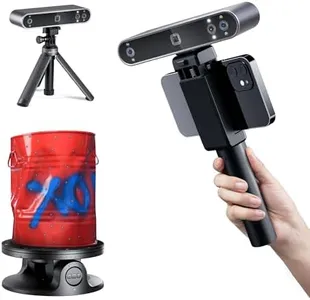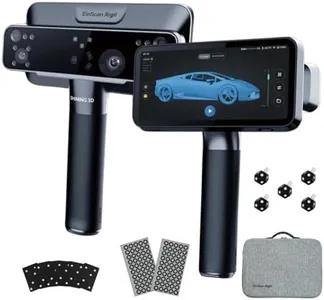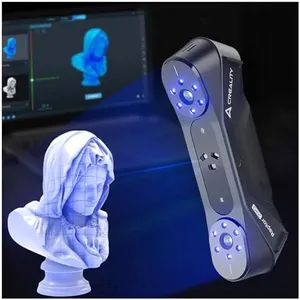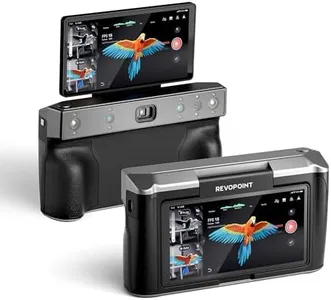10 Best 3D Scanners 2025 in the United States
Our technology thoroughly searches through the online shopping world, reviewing hundreds of sites. We then process and analyze this information, updating in real-time to bring you the latest top-rated products. This way, you always get the best and most current options available.

Our Top Picks
Winner
Creality 3D Scanner Raptor Pro and Scan Bridge Wireless Scanning, 3D Scanner for 3D Printing, High Precision 0.02mm, 60FPS Scanning Speed, 22+7 Blue Laser Lines
Most important from
8 reviews
The Creality Raptor Pro 3D Scanner is designed for users who need high precision and fast scanning, making it a solid choice for 3D printing enthusiasts and professionals alike. It offers ultra-high accuracy with up to 0.02mm precision, which means it can capture fine details very well. The scanning speed is impressive at 60 frames per second, allowing for quick data capture without long waiting times. The wide scanning range supports objects from very small (5mm) to quite large (up to 2000mm), which gives flexibility for various projects.
Portability might be average since the package is a bit bulky at over 12 pounds, but the wireless scanning feature adds convenience by reducing cable clutter and improving ease of movement during use. The scanner also supports full-color mapping, which helps create realistic textures on digital models, and uses marker-based alignment to simplify the process of combining multiple scans into one complete image. The included Scan Bridge should make setup and operation straightforward for most users.
This scanner successfully balances strong technical performance with user-friendly features, making it a versatile tool. However, those needing a lightweight, ultra-compact scanner might find this model less ideal.
Most important from
8 reviews
Creality 3D Scanner CR-Scan Raptor Pro for 3D Printing, 22+7 Blue Laser & NIR Handheld Scanner 0.02mm Accuracy, 60fps High-Speed & 5MM to 4M Objects, 24-Bit Full-Color Scanning for Windows macOS
Most important from
61 reviews
The Creality 3D Scanner CR-Scan Raptor Pro is a robust option for those needing high precision in 3D scanning. With its metrology-grade precision, it offers a resolution of 0.02mm, making it suitable for industrial applications that require meticulous detail. The scanner's multi-mode system, using 22 blue laser lines and 7 near-infrared structured light modes, contributes to its high accuracy and adaptability, allowing it to handle a wide range of materials, including challenging surfaces like automotive glass and reflective metals.
Additionally, the scanner can capture objects from as small as 5mm to as large as 4 meters, which adds to its versatility. Its high-speed capture at 60 frames per second enhances the efficiency of data acquisition, making it a time-saver for extensive projects. The device is also designed for outdoor use, maintaining performance in bright conditions, and offers wireless operation when paired with the CR-Scan Bridge, enhancing its portability and ease of use.
One potential downside is its weight, at 8.85 pounds, which might be cumbersome for prolonged handheld use. Furthermore, users must consider its specific software compatibility, mainly with Windows and macOS, which may limit integration with other systems. This 3D scanner is ideal for professionals in industries requiring precise and versatile scanning capabilities, though it might be a heavier and more complex tool for casual users or small-scale projects.
Most important from
61 reviews
2024 EinScan Pro HD Handheld 3D Scanner with Industrial Pack & Color Pack HD, SolidEdge Shining3D CAD Software for Reverse Engineering, Healthcare, Manufacturing, Research, Art and Design
The 2024 EinScan Pro HD Handheld 3D Scanner is a versatile tool suitable for various applications including reverse engineering, healthcare, manufacturing, and art and design. With a resolution of 3600, it offers impressive detail, making it a great choice for professionals who need high-quality scans. Its portability is a significant advantage, weighing only 2.36 pounds, which ensures ease of use in different environments. The scanner's accuracy and decent scanning speed make it efficient for projects that require precision without extensive waiting time.
One of the standout features is its software compatibility, particularly with the SolidEdge Shining3D CAD Software, which enhances its functionality for design and engineering tasks. The scanning range is suitable for most applications, allowing users to capture both small and larger objects effectively.
However, there are some drawbacks to consider. The minimum system requirement of Windows 7 might limit accessibility for users with newer operating systems. Additionally, while its portability is a plus, the package dimensions suggest it might not be the easiest to transport in all situations. Some users might also find the learning curve steep if they are unfamiliar with 3D scanning technologies. While it ranks well among industrial scanners, it is important to compare it with other models to ensure it fits specific needs and budget constraints.
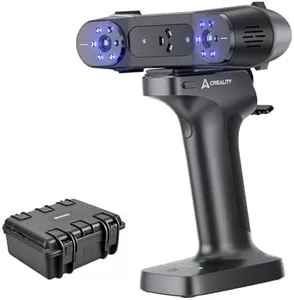
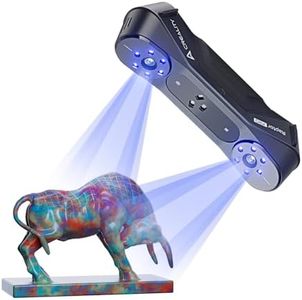

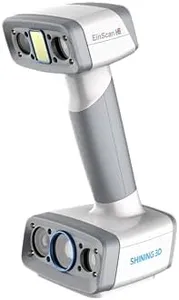
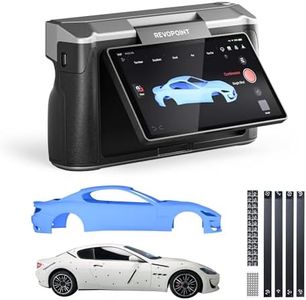
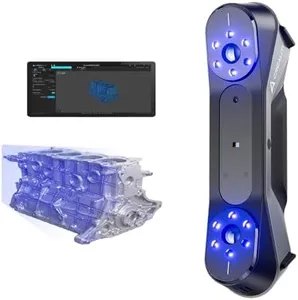
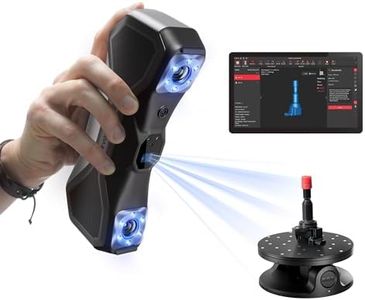


![Shining3D [ EinScan Pro 2X 2020 ] 3D Scanner with Handheld HD Feature Alignment 0.2mm Resolution for Reverse Engineering, Manufacturing, Design, Art, Medical, Education](https://images-proxy.bestreviews.guide/YuQb2CmZp-4XppJNLQKAG3nl7wI=/0x300/https://m.media-amazon.com/images/I/41V2LKuB31L._AC_CX679_.jpg)
